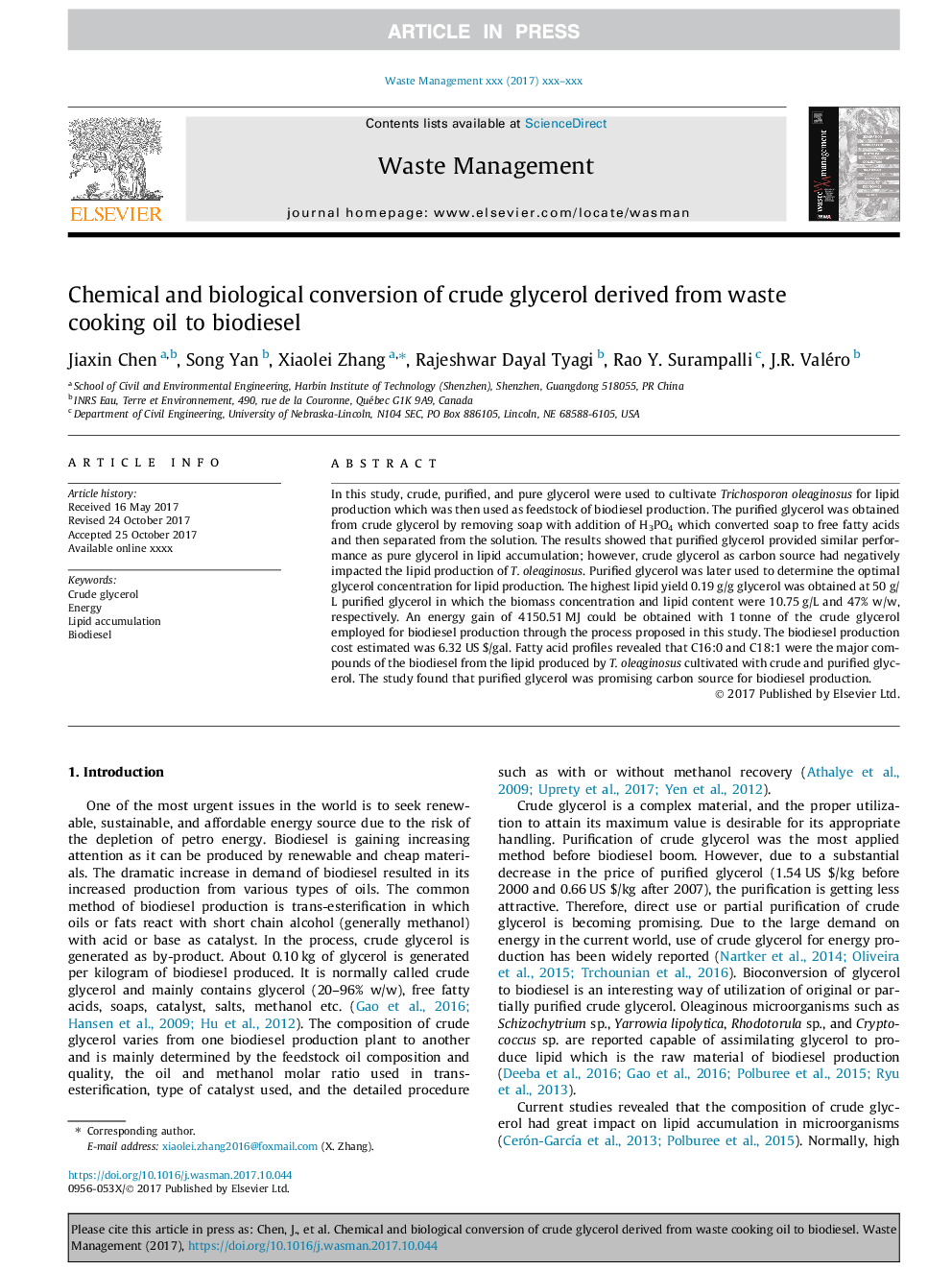| Article ID | Journal | Published Year | Pages | File Type |
|---|---|---|---|---|
| 8870200 | Waste Management | 2018 | 12 Pages |
Abstract
In this study, crude, purified, and pure glycerol were used to cultivate Trichosporon oleaginosus for lipid production which was then used as feedstock of biodiesel production. The purified glycerol was obtained from crude glycerol by removing soap with addition of H3PO4 which converted soap to free fatty acids and then separated from the solution. The results showed that purified glycerol provided similar performance as pure glycerol in lipid accumulation; however, crude glycerol as carbon source had negatively impacted the lipid production of T. oleaginosus. Purified glycerol was later used to determine the optimal glycerol concentration for lipid production. The highest lipid yield 0.19Â g/g glycerol was obtained at 50Â g/L purified glycerol in which the biomass concentration and lipid content were 10.75Â g/L and 47% w/w, respectively. An energy gain of 4150.51Â MJ could be obtained with 1Â tonne of the crude glycerol employed for biodiesel production through the process proposed in this study. The biodiesel production cost estimated was 6.32Â USÂ $/gal. Fatty acid profiles revealed that C16:0 and C18:1 were the major compounds of the biodiesel from the lipid produced by T. oleaginosus cultivated with crude and purified glycerol. The study found that purified glycerol was promising carbon source for biodiesel production.
Related Topics
Physical Sciences and Engineering
Earth and Planetary Sciences
Geotechnical Engineering and Engineering Geology
Authors
Jiaxin Chen, Song Yan, Xiaolei Zhang, Rajeshwar Dayal Tyagi, Rao Y. Surampalli, J.R. Valéro,
